131-135 Duane is fully restored and will open this summer
Well, I am still misty from watching Gloria Gaynor sing the soundtrack of my youth live on Duane Street at 3 in the afternoon. I would say “only in Tribeca” but I don’t think that has ever happened in Tribeca, and likely never will again.
Gaynor — 78 — was just incredible, backed by the tightest band I have heard in ages: three back-up singers, keys, two guitars and a three-person horn section that danced in unison. Clearly they were all having a blast with Gaynor and we were just lucky to be there.
But to the building at hand: The owner of 131-135 Duane, Austrian billionaire (by Forbes’ estimate) Michael Tojner, purchased the building in 2014 and after clearing the Loft Law tenants and pushing the plans through the Landmarks Commission, spent the past three-plus years restoring it; the party was to thank all the tradesmen, construction firms and partners who made it happen.
Yesterday was the building’s 160th birthday, to the day, and Tojner noted that it took twice as long to restore it as it took to build. Construction will continue till the end of July, though now it is largely interior work with a few minor fixes on the facade. (It was such a relief to see the sidewalk open again.)
If I am following the story and the records properly, Henry Meer, who owned City Hall (the restaurant) and the building, sold it to Tojner’s Wertinvest real estate company from Vienna in 2014 for $18.5 million. (Meer closed City Hall a year later, on Dec. 31, 2015, and now owns Pure Liquid, the wine store in the Oculus mall.) The tenants of the building, protected (in theory) by the Loft Law, had successfully used the courts to avoid eviction over the 15+ years that Meer owned it, and then did the same with Tojner; one of the last tenants to take a buyout (in 2019) was the artist Donna Dennis, who designed the PS 234 gates among much more. Dennis had been there since 1973.
The “Hope” is for Thomas Hope, a dry goods merchant who built the building for his company in 1862. He never moved in, and instead leased it to other merchants; then to shoemakers through the ’20s; a turntable manufacturer in the ’30s; sold it to the Lester Pincus Shoe Corporation in 1946; and eventually to Sylvan Lawrence, the downtown real estate company. In the (19)70s and ’80s, it was of course occupied by artists lofts. Meer purchased the building in the late ’90s and opened City Hall in 1998.
Tojner told me he had been looking to invest in New York real estate for a while; his fellow Austrian Thomas Guss has helped him put together a portfolio of several small buildings over the years. It was Tojner’s hope to be an architect when he was younger, but his father — a plumber — wouldn’t allow it. Architects don’t make any money, the father told his son. “My love and passion is architecture. Now the money I make I allocate to real estate.”
He must have allocated a lot of it on 131-135 Duane, and it is hard to see how he could possibly recoup the investment. But that didn’t seem to phase him.
“We are trying to make something last for the decades to come, so we look for the quality of the building,” Tojner said. “Is everything about making money? There’s always a decision. You can save money or you restore it nicely so everyone who walks by has a good feeling. It will pay off in the long term.”
A few details, gathered from Tribeca architect Jonathan Schloss, who designed the interiors and managed the restoration:
> the building has eight rental units, including the two-story penthouse
> the façade is marble
> the ground floor façade is cast iron
> they replaced the wood doors from the 1980s with cast iron surrounds and steel doors
> the first four floors retain the cast iron structure
> the top three floors were rebuilt with steel
> the bottom floor restaurant (more on that soon) is 11,000 square feet
While the building itself is not landmarked, it was a “significant contributing building” to the Tribeca South Historic District, which triggered a higher bar for restoration. The cast iron columns on the inside (they get less elaborate as the floors get higher) have been stripped and repainted; the wood beams exposed; the floors replaced with wide reclaimed planks. The “Hope Building” name on the top had been covered in wood for decades; it was uncovered when construction began.
By total coincidence Schloss, who lives in Battery Park City, can see the building from his desk in 277 Broadway, and he’s taken a picture from the spot each day since the start of construction.
And now it’s back to 1800s Tribeca glory.
“I’m very proud to be the owner of this fantastic building,” Tojner told the crowd in between Gaynor’s sets, thanking everyone again — even the CFO who paid the invoices on time. “I think this building will give a great soul to Tribeca and to the neighbors.”







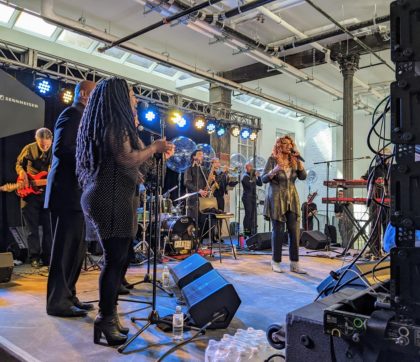
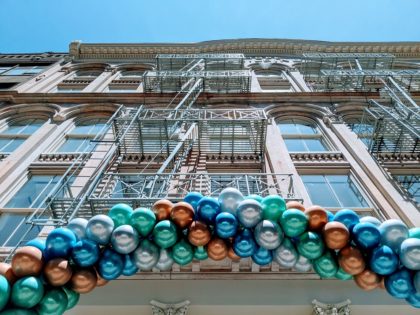
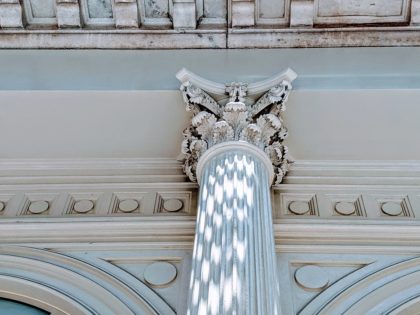
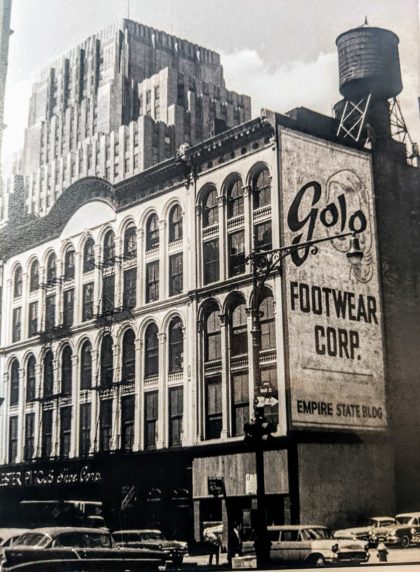
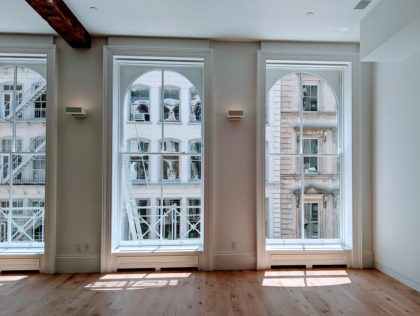
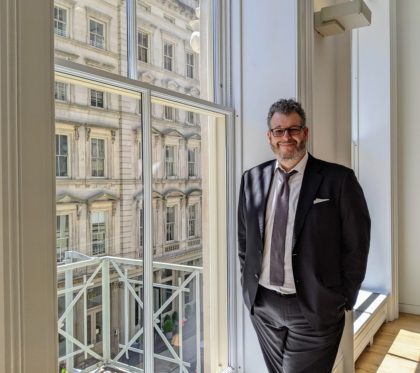
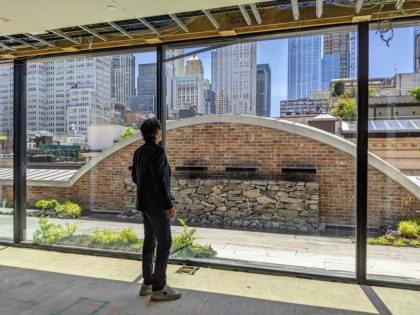
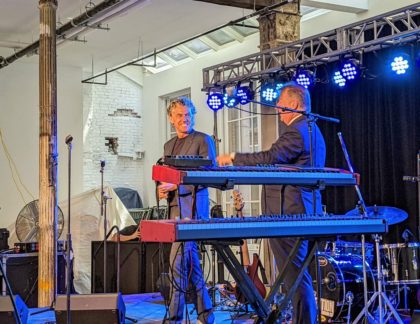
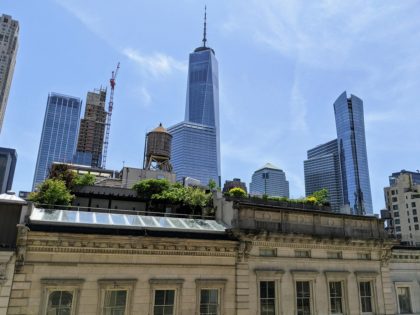
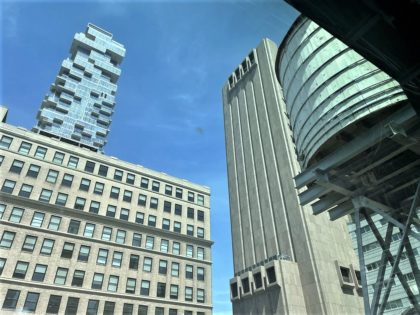
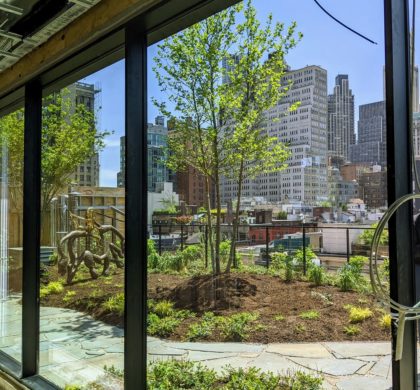
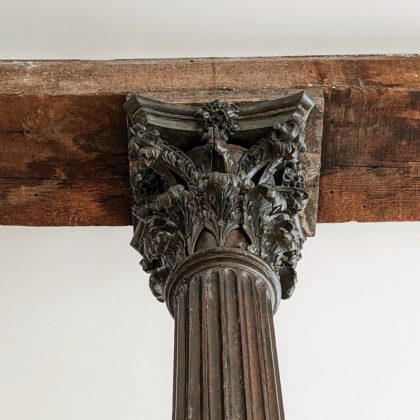







No mention of who the did the construction? It was a thank you party? Beautiful building!
Sciame
Great story and so grateful for owners/investors infusing integrity into their restorations. That will be appreciated for the next century!
High end rentals? Welcome!
The soul in Tribeca was the result of the young artists who lived in largely abandoned buildings and in difficult conditions and revived the area with their families and energy while fighting off the repeated attempts by a series of owner/landlords who thought they would be, in your terms, “clearing” the building of its tenants (referred to by one gentleman as the ‘nuisance factor) who were legally residing there under the Loft Law and an earlier court ruling that gave them legal rent stabilization. It was their presence that led to the construction of PS 234, Duane Street Park and created the neighborhood which became Tribeca.
With rents now in the neighborhood of $300,000 a year I am left astonished at how expensive souls have become.
Well said. Thank you Jed. It’s sad how many people think it’s so wonderful to get rid of the tenants that made the area so attractive to begin with.
This was a wonderful neighborhood for artists and their families and I lived there for 40 years and my ties to the building and to Tribeca made me think to myself ” I will be buried under the stairs!”
Neighborhood has changed. A lot. and then, anyone running out to pick something up did so in paint covered jeans and shoes and no one was there to blink let alone wonder “who is that person?”
Decades ago the Times ran an article on Tribeca and stated that this was the location of the 1st Black Theatre in the city! | thought that to be true!
A lot has been lost for the artists in the gentrification but more was lost on 9/11. It took me 2 years to begin to get over the great loss of everything and it felt like our own backyard had been bombed
One could not say that because of the much much greater loss of lives and a tragedy for so many from everywhere. It hit hard and those feelings have not disappeared. You saw the towers daily and loved it when the tops and most of the buildings disappeared into low, thick, white “cloud coverage ” with no hint of what was there! Now, annually there are 2 columns of lights.
The sadness is overwhelming. It was only after a 1st visit to Ground Zero with my young daughter and looking at the photos on the walls of Trinity Church and at the scarred lines of the firemen and others on the wooden pews, that finally tears filled my eyes as they are doing right now in writing this. Very happily t see the building and neighborhood revived, Hopefully, we artists when mere shadows will enjoy the streets once again remembering when everyone else would ask
“Tribeca? Where’s that?” Well, in our hearts and souls and painted in funny. out-of-focus This was a wonderful neighborhood for artists and their families and I lived there for 40 years and my ties to the building and to Tribeca made me think to myself ” I will be buried under the stairs!”
Neighborhood has changed. A lot. and then, anyone running out to pick something up did so in paint covered jeans and shoes and no one was there to blink let alone wonder “who is that person?”